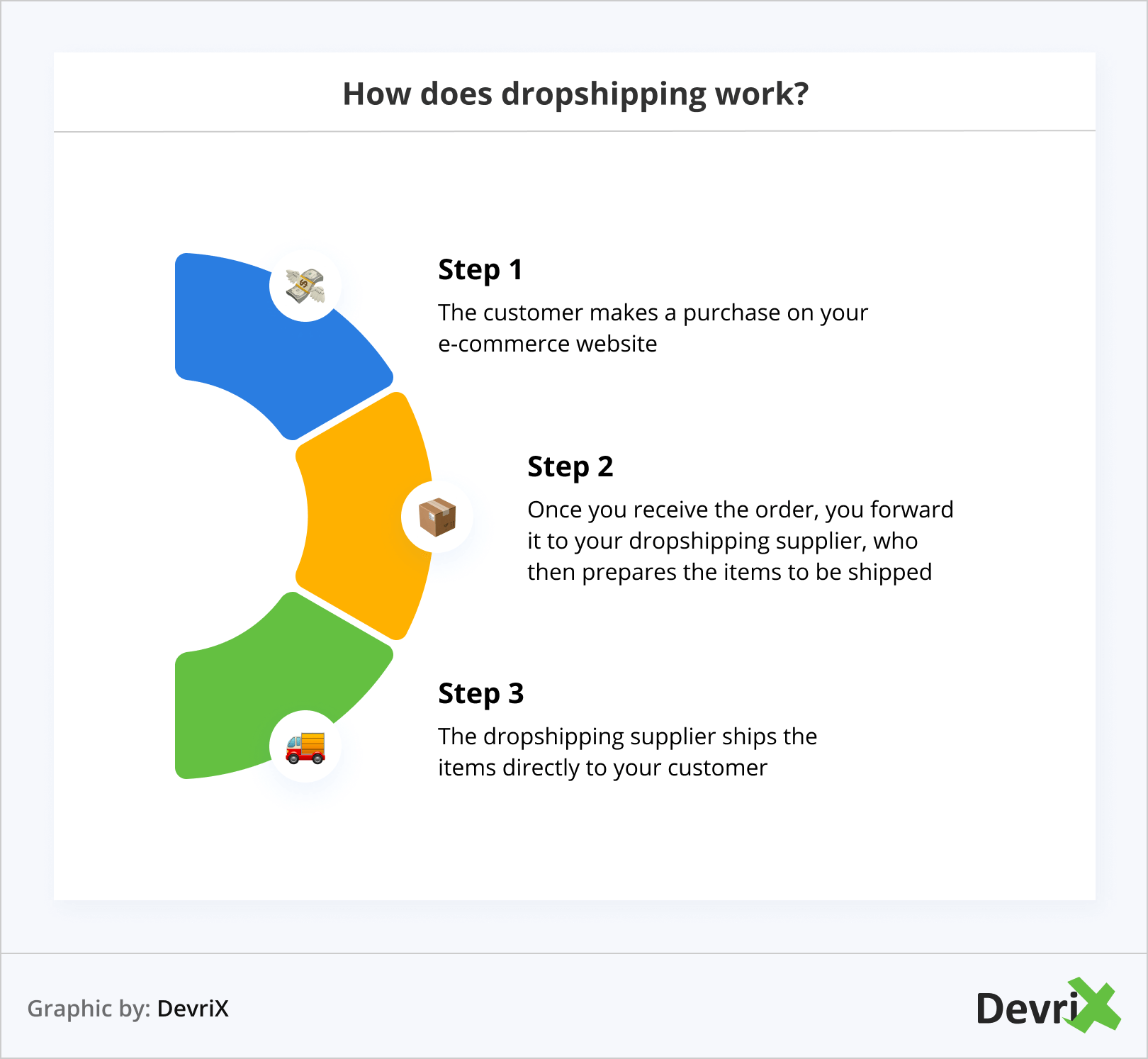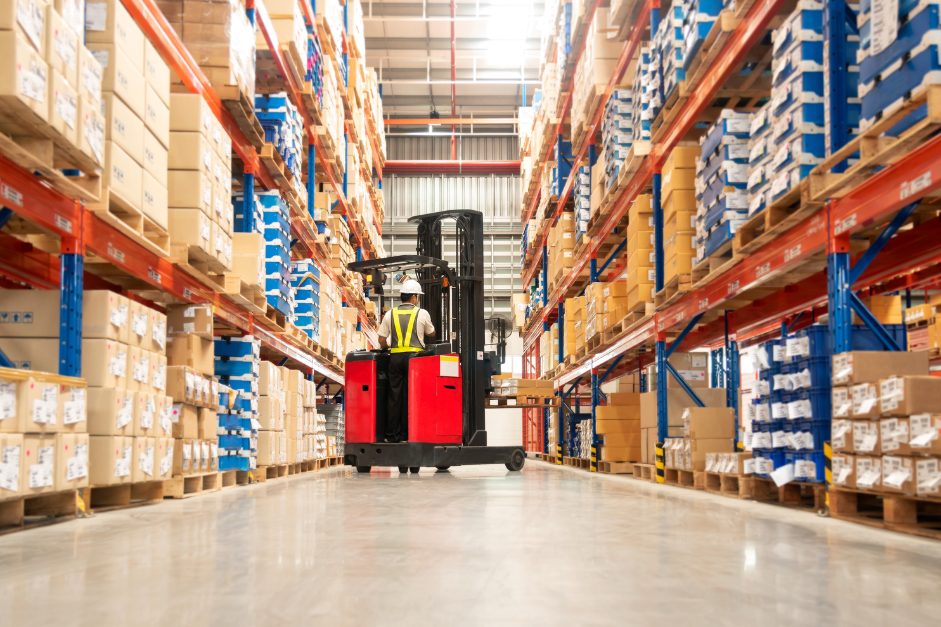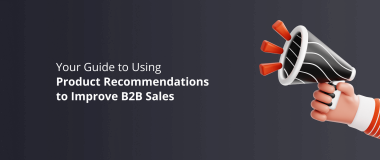One thing that will always remain common between online and physical retailers is that, regardless of what they are selling, they will always need to keep products in stock.
If you are a merchant using the standard retail model, you buy goods from suppliers and keep inventory on hand. But there’s another model called dropshipping, where suppliers send products directly to customers upon ordering, and you never see or handle those products.
Here is the thing. The global dropshipping market is expected to raise to $243.42 billion in 2023. North America is the fastest growing market with an expected compound annual growth rate (CAGR) of 23.5% by 2030. These numbers mean big opportunities for businesses to benefit from the dropshipping model.
We know dropshipping seems too wonderful to be true. And while many believe it’s a great way to start with eCommerce, others reject it due to hearing about scams and unrealistic promises. Both are true.
This article will guide you through finding the right balance between what you think about dropshipping and what it really is. By the end of it, you will hopefully have a clear understanding of how this method works, its advantages, disadvantages, how to find good suppliers, and what you need to succeed in selling.
Keep reading!
What Is Product Sourcing?
Product sourcing is where and how you locate goods to sell. Finding trustworthy vendors who provide products that your clients will love is the key to a success in selling.
If your eCommerce business has poor product sourcing strategy, this will hurt not only your earnings but your future as well. You need high quality products, delivered at the right time, and flexibility for your business to scale.
In eCommerce there are four most common ways to source products:
- Dropshipping. You rely on your suppliers to handle every aspect of the transaction, from order fulfillment to manufacture.
- Wholesaler. If you want to quickly fill out your catalog but don’t want to manufacture products from scratch, working with a wholesaler is a good option.
- Manufacturer. With this method, a manifacturer will handle the product creation while you design products. The manufacturer will then send you a shipment of their goods so you can store and market them.
- Handmade. You maintain total control over the design, production and storage of your items.

Readers Also Enjoy: 7 Major eCommerce Challenges Sellers Face – DevriX
Understanding Dropshipping
With more customers shifting to online shopping, dropshippers are becoming major players in the eCommerce space. So if you are questioning yourself whether this is a good time to get into the sector, the answer is yes.
The process is rather simple. Your consumer orders from your online store. You send the order to your dropshipping supplier, and they ship the item to your customer.

Advantages of Dropshipping Product Sourcing
The biggest advantage of dropshipping is that it allows you to start an eCommerce company without having to invest thousands of dollars in inventory up front. But there is more:
Easy to Start
With the dropshipping model you don’t have to worry about:
- Paying and managing warehouses.
- Packing and shipping orders.
- Tracking inventory.
- Handling returns and inbound shipments.
- Managing stock level.
Low Expenses
Dropshipping businesses can be run from your couch at home for a couple of hundred dollars a month. Of course the overhead expenses may rise as your business expands, but they will remain lower than typical retailers.
Location
You can manage your online business from anywhere as long as you can communicate with suppliers and customers.
Large Product Selection
You can offer a wide range of products to your potential customers because you do not have to pre-purchase the stuff you sell.
Easy to Scale
As the suppliers will bear the majority of the order processing efforts you are going to expand with fewer pains and less incremental work.
Readers Also Enjoy: 7 eCommerce Marketing Tools to Skyrocket Your Sales in Dropshipping – DevriX
Disadvantages of Dropshipping Product Sourcing
No matter how good it sounds, dropshipping comes with a few important disadvantages.
Inventory Problems
Inventory varies every day when you source from numerous warehouses.Though you can attempt to sync your store’s inventory with suppliers. Although, it is not always perfect since not all suppliers may have the necessary technology.
Shipping Issues
The majority of dropshippers work with several vendors. This means that the products on your webstore will come from different sources. This may also have an impact on your shipping prices.
For instance, if we assume a consumer orders five different items, all of which come from different providers, you may need five distinctive shipping prices. While this lessens the risk of overcharging for shipping, which is not a good strategy and most probably you may end up bearing the cost.
Low Margins
Since it’s super easy to get started and the costs are pretty low, the dropshipping world is crazy competitive. Lots of merchants try to boost their revenue by selling at dirt-cheap prices and working on lowest profit margins.

Readers Also Enjoy: What Is a Flash Sale? [Pros & Cons for eCommerce Stores] – DevriX
5 Tips on Finding Legitimate Suppliers
If you’re certain about building an eCommerce business through dropshipping product sourcing, the first step is to ensure that your suppliers are legitimate. A genuine wholesaler purchases directly from the manufacturer and can provide you with better pricing.
1. Identify the Fake Wholesalers
There are many fake wholesalers out there who are skilled in marketing and appear often in searches. However, there are tactics that can help you filter the information and identify legitimate wholesalers:
- Memberships. A decent wholesaler won’t charge you a monthly fee for doing business. If they ask for a service fee, chances are they’re fake. Keep in mind, though, that charging for pre-orders and having a minimum order size are legitimate practices.
- They sell to the general public. A supplier claiming to offer products at “wholesale prices” to the general public is a retailer selling items at inflated prices
2. Master the Google Search
When you search for legitimate suppliers you most probably will end up searching on Google. How to navigate through the sea of results?
- Search Relentlessly. Legitimate wholesalers are famously bad at marketing, and you won’t find them at the top of your search results. It means you’ll have to spend a lot of time digging through hundreds of results.
- Use More Keywords. Wholesalers don’t spend much time on SEO. To find good suppliers, you need to get creative and use various keywords like “supplier,” “distributor,” “reseller,” etc., instead of just searching for “Wholesaler for X product.”
- Do Not Judge “The Book by Its Cover.” Good suppliers operate in the offline world.Their website design might look bad, so don’t dismiss them based solely on this.
3. Call the Manufacturers
If you already know the products you want to sell, just pick up the phone and directly ask the manufacturers for a list of their wholesale distributors. It’s as simple as that! Then you can reach out to them to inquire about dropshipping possibilities and discuss setting up an account.
4. Order From the Competition Trick
The dropshipper is invisible to the end customer. Upon receiving the package, only the return address and logo will be visible on the shipment. You can use this to identify legitimate suppliers. Make a small order from a competitor. When you get the package, Google the return address to find the original shipper, which could be a supplier you can directly get in touch with.
5. Use Directories
A supplier directory is an online database organized by market, niche, or product. Most directories charge a fee to access their directory.
Here are a few of the most well-known supplier directories:
- SaleHoo. SaleHoo offers a vast directory of trusted suppliers and helps users find profitable products to sell.
- Worldwide Brands. Worldwide Brands is a long-established directory with over 16 million wholesale products from certified suppliers. It provides a comprehensive list of wholesalers and dropshippers, along with educational resources.
- Doba. Doba offers a curated list of reliable suppliers and facilitates order management and fulfillment.
- Wholesale Central. Wholesale Central is a free-to-use directory that features wholesale suppliers across various product categories. It’s a valuable resource for finding legitimate suppliers.

5 Tips on How to Be Successful in Selling Online
As a dropshipper, here’s the secret to your success: put your passions aside and don’t pick products to sell just because you like them. Instead, focus on doing proper marketing research and follow a few useful tips:
1. Get Access to Exclusive Pricing
If you manage to arrange exclusive agreements, you are steps ahead of the competition. This is difficult to achieve but worth trying, and may eventually come with time.
Focus on effective communication: demonstrate your commitment, show them how you can add value to their products, provide exceptional customer service, and explore the possibility of negotiating exclusive deals.
2. Don’t Sell at Lowest Price
A business model solely focused on offering the lowest price is destined to fail. If the only thing you can offer is low prices, you’ll end up in a pricing war that will strip you of all your profits. Accept it: you cannot compete with established online giants.
3. Add Expert Value Through Content
By providing valuable information alongside your products, you not only differentiate yourself from competitors but also establish a perception of higher quality, allowing you to justify and demand a premium price in the market.
Businesses that effectively address people’s problems and needs are the ones that thrive. Becoming an expert in your niche and providing valuable advice is the key to building a successful and profitable dropshipping business.
4. More Complexity, More Communication
The more complexity a product requires to function properly, the higher the chances customers will seek answers from you. This is the key because it increases your value as an expert (and, in turn, boosts the price of your product).
Ask yourself: which item would offer more opportunities to communicate with your client – a beach ball or a wi-fi ring video doorbell? Selling more complex products that require technical setup or installation provides you with the opportunity to offer the best client service and add value through content. You can create buyer guides, produce video content, establish client support, etc.
Wrap Up
In conclusion, dropshipping product sourcing can be your best move for eCommerce, but only if done right. To be a pro, nail research, find reliable suppliers, ace customer service, and rock the dropshipping marketing!




